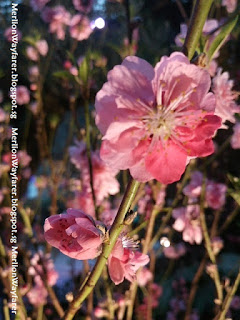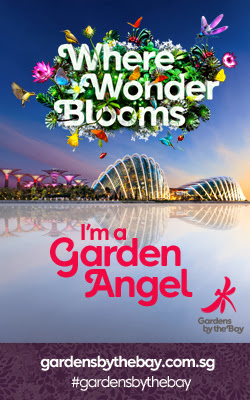Gardens By The Bay
Marina, South
March 2016
Cherry blossoms in bloom right here in tropical Singapore - this unexpected sight is what visitors will get to see at Gardens by the Bay’s latest floral display - Blossom Beats. This is the first time that visitors can see such a myriad of cherry blossoms, as well as other blossoms, in the Flower Dome at Gardens by the Bay.
The crowds can be overwhelming...

But the blossoms were worth any queue...
What the same scenes look like - with and without people...
It is still possible to get very good shots, with patience and creativity.
Styled after a traditional Japanese garden, “Blossom Beats” will also feature quintessential Japanese elements such as a tori gate, Japanese screens and kimono.


More than 20 varieties of cherry blossoms, or sakura, are showcased in the floral display. On display are cultivars such as the Prunus Fujishidare which has pendulous branches, the Prunus Yedoenis Yoshino which stands out with its striking white flowers, and the Prunus Accolade, with its pale pink blooms.
It was truly a romantic time for couples -
It was heartwarming to see their smiles and loving glances...
In addition to cherry blossoms, peach blossoms are in bloom too. One unusual variety on show is the Prunus Genpei Shidare which has flowers of two different colours - red and white- growing on the same plant.


The trees are still budding... promising many more beautiful blooms to come...
Borrowed scenery (借景; Japanese: shakkei; Chinese: jièjǐng) is the principle of "incorporating background landscape into the composition of a garden" found in traditional East Asian garden design. The term borrowing of scenery ("shakkei") is Chinese in origin, and appears in the 17th century garden treatise Yuanye. When the builder of a Japanese garden takes into consideration nearby or distant landmarks that could be seen from the garden - mountains, cascades, or works of architecture - he is essentially using the concept “borrowed scenery”.
The red bridge was supposed to represent the route blessed to take to salvation. In Zen symbolism red represents life force, preservation, the sacred, and red transforms the delusion of attachment into the wisdom of discernment...
In the Gardens, you have the opportunity to experience a mini "hanafubuki" (flower snow storm), where the falling blossom petals descend upon the ground like drifting snow flakes, coating the ground in a soft pink and white carpet of petals.
There are always the other blossoms and sights at the Gardens that are equally memerizing...
This experimental floral display is expected to run till March 27. Check Gardens by the Bay’s Facebook page at
www.facebook.com/gardensbythebay for updates on the blooming.





















































































